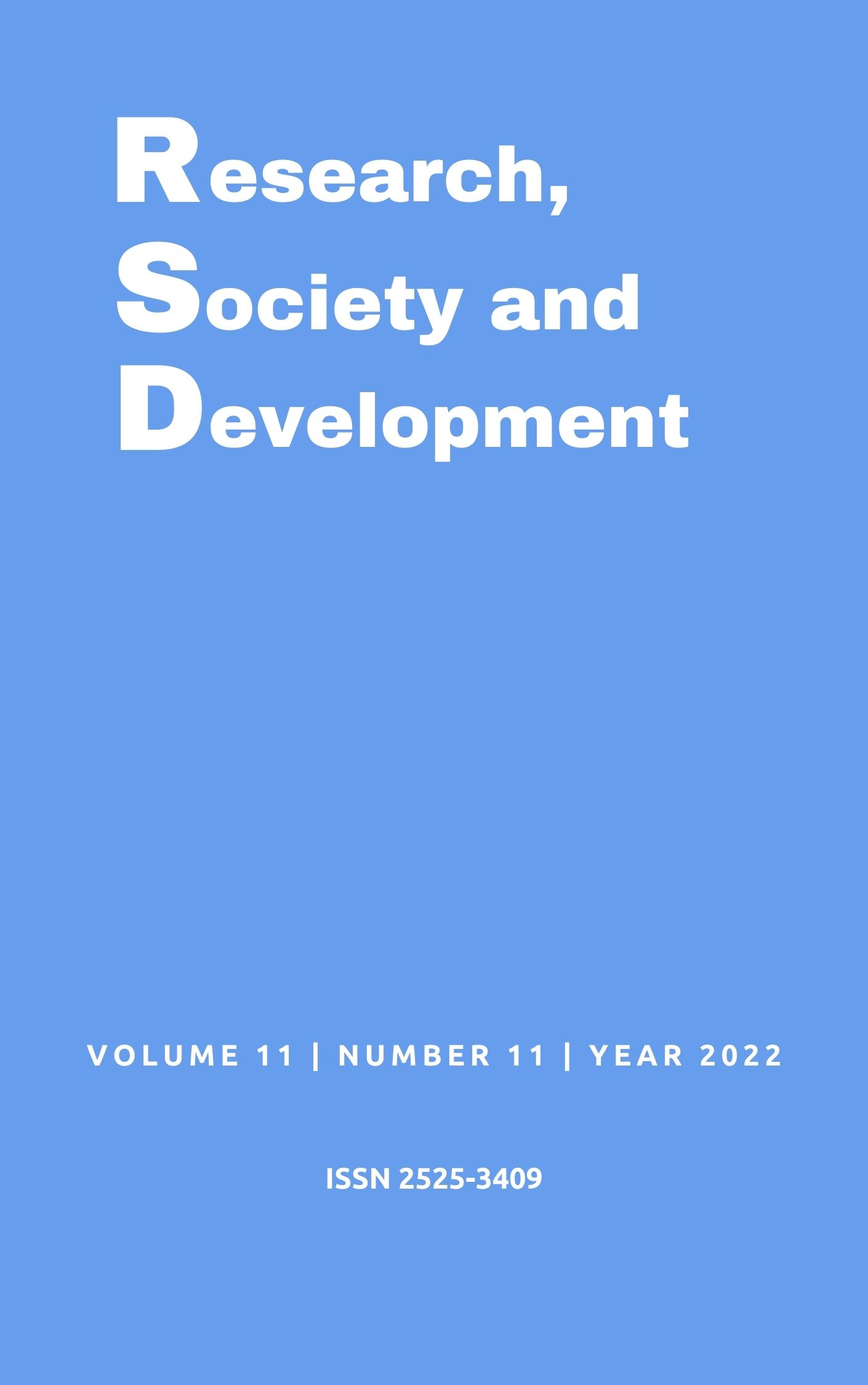Achieving reading comprehension through integrated vocabulary instruction
DOI:
https://doi.org/10.33448/rsd-v11i11.33528Keywords:
Traditional reading, Literal comprehension, Proficiency, Beginners, Foreign language.Abstract
Reading and vocabulary have long been considered an intrinsic connection to help students acquire the language, but the literature suggests vocabulary as a pivotal feature to guarantee reading comprehension. This research study from a master's dissertation tried to explain the gains and perceptions of integrated vocabulary instruction on reading comprehension performance. To accomplish the aim of the study, sixty-six A1 EFL students from a rural public school in their first baccalaureate year were selected and assigned into two groups (traditional and integrated). All participants took part in eight reading lessons with their designated vocabulary instruction. After each class, they took a reading comprehension test based on literal comprehension questions. Moreover, at the end of the research, the perceptions of the experimental group (integrated instruction) were gathered. After analyzing the data, this study found that integrated vocabulary instruction can lead to higher reading comprehension achievement at a beginner level of proficiency. Moreover, this research proposes an extensive study on the benefits of integrated instruction when working with upper proficiency levels.
References
Bachowickz, C., Fisher, P., & Ogle, D. (2006). Vocabulary: Questions from the classroom. Reading Research Quarterly, 41(4), 524-539. doi:10.1598/RRQ.41.4.5
Basaraba, D., Yovanoff, P., Alonzo, J., & Tindal, G. (2012). Examining the structure of reading comprehension: do literal, inferential, and evaluative comprehension truly exist? Reading and Writing, 26(3), 349-379. doi:10.1007/s11145-012-9372-9
Berne, J., & Blachowicz, C. (2008). What Reading Teachers Say about Vocabulary Instruction: Voices From the Classroom. The Reading Teacher, 62(4), 314-323. doi:10.1598/RT.62.4.4
Bryman, A. (2012). Social Research Methods (4th ed.). New York, NY: Oxford University Press.
Golonka, E., Bowles, A., Silbert, N., Kramasz, D., Blake, C., & Buckwalter, T. (2015). The Role of Context and Cognitive Effort in Vocabulary Learning: A Study of Intermediate-Level Learners of Arabic. The Modern Language Journal, 99(1), 19-39. doi: 10.1111/modl.12191
Engku, E., Sarudin, I., & Muhamad, A. (2016). The Relationship between Vocabulary Size and Reading Comprehension of ESL Learners. English Language Teaching, 9(2), 116-123. doi:10.5539/elt.v9n2p116
Ehri, L.(2022). What Teachers need to know and to teach letter-sounds-phonemic awareness, Word reading, and Phonics. The Teacher Reader, 76(1), 53-61. doi:101002/trtr.2095
Khazaal, E.(2019). Impact of Intensive Reading Strategy on English for Specific Purposes College Students' in Developing Vocabulary. Arab World English Journal, 10(2), 181-195.doi: https://dx.doi.org/10.24093/awej/vol10no2.15
Kung, F. (2017).Teaching second language reading comprehension: the effects of classroom materials and reading strategy use. Innovation in Language Learning and Teaching, 1-12.doi: 10.1080/17501229.2017.1364252
Golonka, E., Bowles, A., Silbert, N., Kramasz, D., Blake, C., & Buckwalter, T. (2015). The Role of Context and Cognitive Effort in Vocabulary Learning: A Study of Intermediate-Level Learners of Arabic. The Modern Language Journal, 99(1), 19-39. doi: 10.1111/modl.12191
Grabe, W. (2004). Research on Teaching Reading. Annual Review of Applied Linguistics, 24, 44-69. doi:10.1017/S0267190504000030
Grabe, W. (2017). L2 reading comprehension and development. In E. Hinkel (Ed.), Handbook of research in second language teaching and learning, 3, 299-311.
Gungor, F., & Yayh, D. (2016). The Interplay between Text-based Vocabulary Size and Reading Comprehension of Turkish EFL Learners. Educational Sciences: Theory and Practice, 16(4), 1171-1188. doi:10.12738/estp.2016.4.0078
Hamzehlou, S., Zainal, Z., & Ghaderpour, M. (2012). A Review on the Important Role of Vocabulary Knowledge in Reading Comprehension Performance. Procedia: Social and Behavioral Sciences, 66, 555-563. doi:10.1016/j.sbspro.2012.11.300
Harmer, J. (2007). How to Teach English. Harlow, England: Pearson Education Limited.
Mackey, A.,& Gass, S.(2005). Second Language Research: Methodology and Design. Mahwah, NJ: Lawrence Erlbaum Associates
Nation, P. (2009). Teaching ESL/EFL Reading and Writing. New York: Routledge.
Naeimi, M., & Chow, T. (2015). Vocabulary Acquisition through Direct and Indirect Learning Strategies. English Language Teaching, 8(10), 142-151. doi:10.5539/elt.v8n10p142
Olmez, F. (2016). Exploring the Interaction of L2 Reading Comprehension with Text- and Learner-related Factors. Procedia: Social and Behavioral Sciences, 232, 719-727. doi:10.1016/j.sbspro.2016.10.09
Oslund, E. & Elleman, A.(2019). Reading Comprehension Research: Implications for Practice and Policy.Policy Insights from the Behavioral and Brain Sciences, 6(1),3-11. https://doi: 10.1177/2372732218816339 journals.sagepub.com/home/bbs
Wright, T. S., & Cervetti, G. N. (2017). A systematic review of the research on vocabulary instruction that impacts text comprehension. Reading Research Quarterly, 52(2), 203–226. https://doi.org/10.1002/rrq.163
Zucker, T. Cabell, S., & Pico, D.(2021). Going Nuts for Words: Recommendation for Teaching Young Students Academic Vocabulary. The Reading Teacher, 74(5), 581-594. doi: 10.1002/trtr.1967
Downloads
Published
Issue
Section
License
Copyright (c) 2022 Gabriela Gáleas Arboleda; María Angélica Rivadeneira Zambrano; Luis Alfredo Camacho Castillo; Jardel Coutinho dos Santos

This work is licensed under a Creative Commons Attribution 4.0 International License.
Authors who publish with this journal agree to the following terms:
1) Authors retain copyright and grant the journal right of first publication with the work simultaneously licensed under a Creative Commons Attribution License that allows others to share the work with an acknowledgement of the work's authorship and initial publication in this journal.
2) Authors are able to enter into separate, additional contractual arrangements for the non-exclusive distribution of the journal's published version of the work (e.g., post it to an institutional repository or publish it in a book), with an acknowledgement of its initial publication in this journal.
3) Authors are permitted and encouraged to post their work online (e.g., in institutional repositories or on their website) prior to and during the submission process, as it can lead to productive exchanges, as well as earlier and greater citation of published work.


